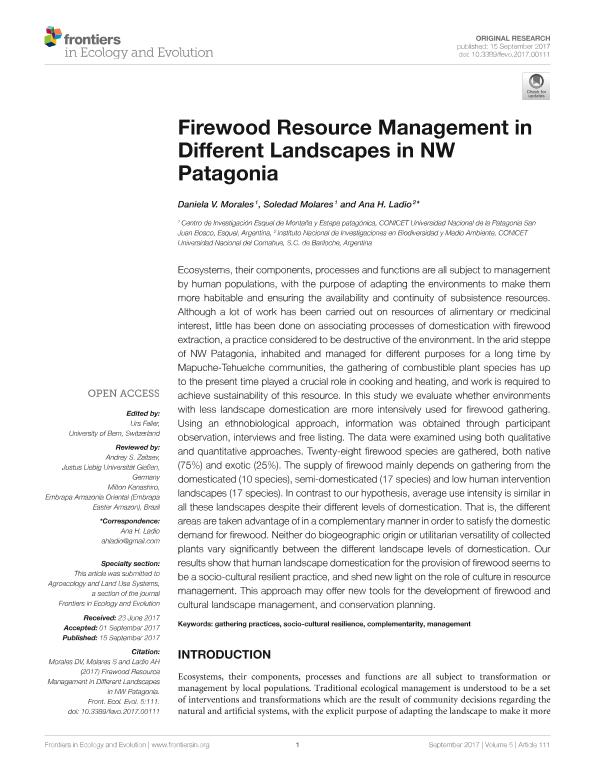Artículo
Firewood Resource Management in Different Landscapes in NW Patagonia
Fecha de publicación:
09/2017
Editorial:
Frontiers
Revista:
Frontiers in Ecology and Evolution
e-ISSN:
2296-701X
Idioma:
Inglés
Tipo de recurso:
Artículo publicado
Clasificación temática:
Resumen
Ecosystems, their components, processes and functions are all subject to management by human populations, with the purpose of adapting the environments to make them more habitable and ensuring the availability and continuity of subsistence resources. Although a lot of work has been carried out on resources of alimentary or medicinal interest, little has been done on associating processes of domestication with firewood extraction, a practice considered to be destructive of the environment. In the arid steppe of NW Patagonia, inhabited and managed for different purposes for a long time by Mapuche-Tehuelche communities, the gathering of combustible plant species has up to the present time played a crucial role in cooking and heating, and work is required to achieve sustainability of this resource. In this study we evaluate whether environments with less landscape domestication are more intensively used for firewood gathering. Using an ethnobiological approach, information was obtained through participant observation, interviews and free listing. The data were examined using both qualitative and quantitative approaches. Twenty-eight firewood species are gathered, both native (75%) and exotic (25%). The supply of firewood mainly depends on gathering from the domesticated (10 species), semi-domesticated (17 species) and low human intervention landscapes (17 species). In contrast to our hypothesis, average use intensity is similar in all these landscapes despite their different levels of domestication. That is, the different areas are taken advantage of in a complementary manner in order to satisfy the domestic demand for firewood. Neither do biogeographic origin or utilitarian versatility of collected plants vary significantly between the different landscape levels of domestication. Our results show that human landscape domestication for the provision of firewood seems to be a socio-cultural resilient practice, and shed new light on the role of culture in resource management. This approach may offer new tools for the development of firewood and cultural landscape management, and conservation planning.
Palabras clave:
Gathering Practices
,
Complementarity
,
Socio-Cultural Resilience
,
Management
Archivos asociados
Licencia
Identificadores
Colecciones
Articulos(CIEMEP)
Articulos de CENTRO DE INVESTIGACION ESQUEL DE MONTAÑA Y ESTEPA PATAGONICA
Articulos de CENTRO DE INVESTIGACION ESQUEL DE MONTAÑA Y ESTEPA PATAGONICA
Citación
Molares, Soledad; Ladio, Ana Haydee; Morales, Daniela Vanesa; Firewood Resource Management in Different Landscapes in NW Patagonia; Frontiers; Frontiers in Ecology and Evolution; 5; 9-2017; 1-13; 111
Compartir
Altmétricas




